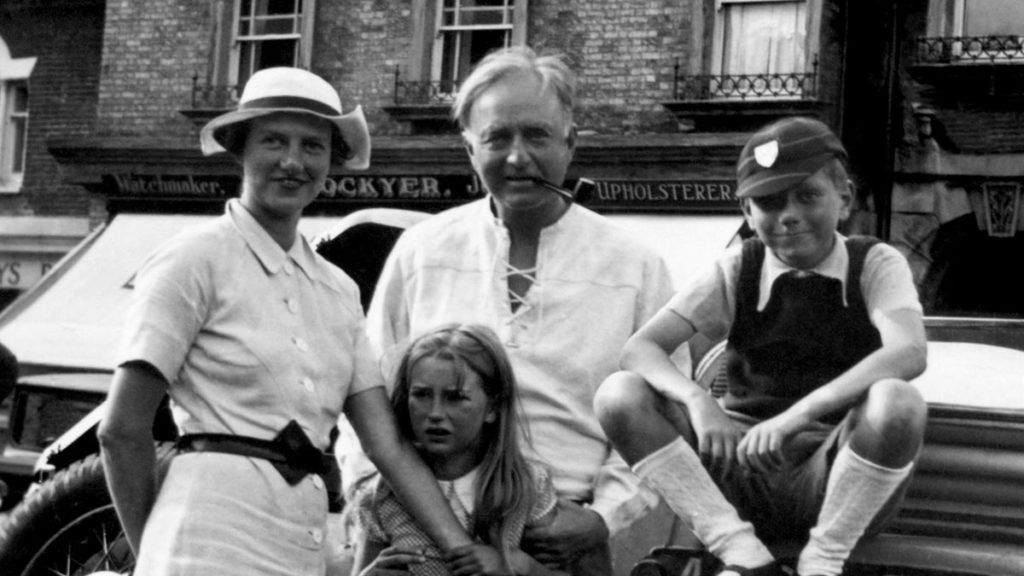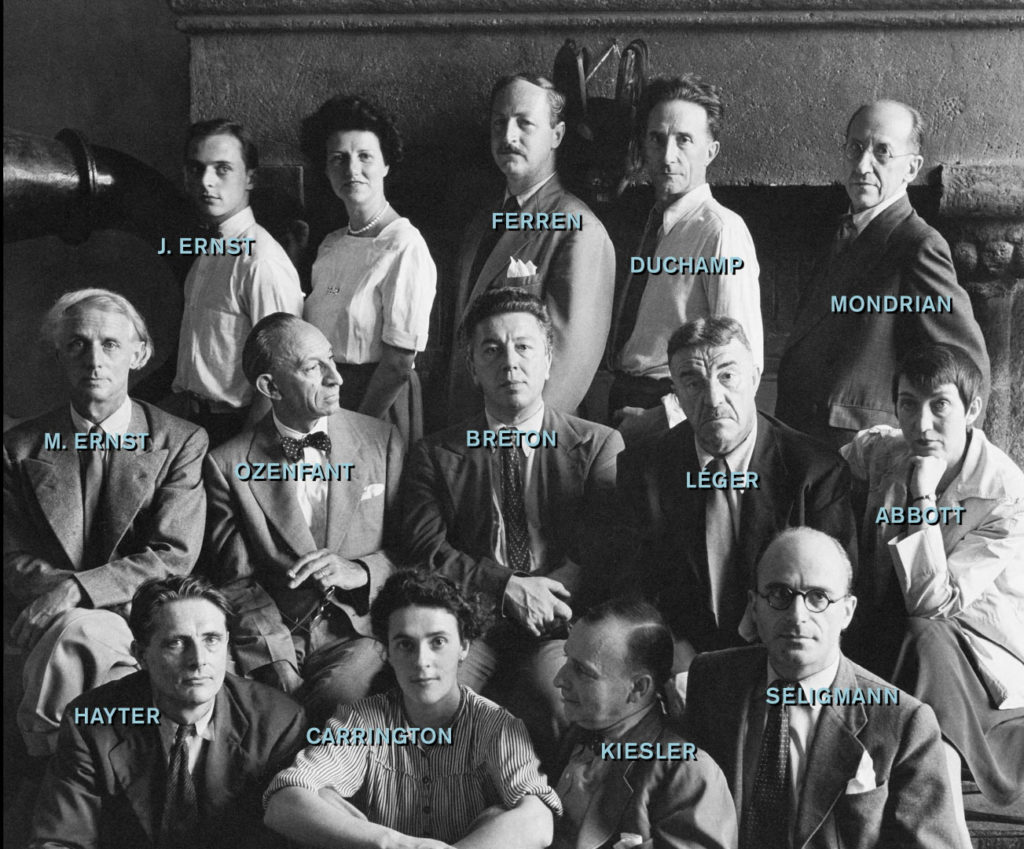The life and legacy of Peggy Guggenheim is not easily condensed into a 500 word blog post or even into the hour and a half documentary Peggy Guggenheim: Art Addict, by filmmaker Lisa Immordino Vreeland. Guggenheim was a larger-than-life figure whose colorful personal life often overshadowed the astounding collection of Modern Art she managed to assemble in her lifetime. Ahead of the upcoming exhibition Realm of the Spirit: Solomon R. Guggenehim Collection and the Gibbes Museum of Art, opening on October 22, the Gibbes is screening the film Peggy Guggenheim: Art Addict on September 14 at 6pm. The film chronicles Peggy’s life through taped interviews with Guggenheim and those who knew her best.
Born in 1898 in New York, Peggy was the daughter of Benjamin Guggenheim and Florette Seligman. The Guggenheims made their fortune in mining and the Seligmans were a successful banking family. Peggy was raised in a world of wealth and privilege, but which was marred by grief. Her father died on the Titanic in 1912 (and was rumored to have been traveling with his mistress) when Peggy was only 14. Both devastated by the loss and angry at her father for his philandering, Peggy began to rebel against her upbringing and constrictive society, and moved to Paris in her early 20s. There she immersed herself in the world of Parisian Boheme and American ex-pat society where she felt at home. She formed acquaintances with everyone from Ernest Hemingway and Constantin Brancusi to Marcel Duchamp and Samuel Beckett. In her autobiography Out of This Century published in 1946, Guggenheim candidly documented many of the romantic relationships she formed during this time, and shocked much of her family (and the world) with her frankness regarding her sexuality. Her exploits garnered more press than her acquisition of now priceless works of art as many of the artists she was collecting were relatively unheard of at the time.

Over the course of the 20s and 30s, Peggy’s motto to “buy a picture a day” had created a treasure trove of Modern Art in her care. With this collection, she opened Guggenheim Jeune in London in 1938 and was met with immediate success. She mounted exhibitions by little known artists such as Vasily Kandisky and Alexander Calder, but was forced to close the gallery in 1939 as the political climate in Europe was escalating into war. As Hitler and the German army advanced upon Paris, Guggenheim capitalized on the rapid departure of many artists from the city by buying up works at a fraction of their cost from those including Brancusi, Dali, Giacometti, Braque, Magritte, Man Ray, and Mondrian. She returned to New York and continued to collect and exhibit Cubist, abstract and Surrealist art, all of which was rising in popularity during this time. Guggenheim played a vital role in the development of American Abstract Expressionism and is often credited with launching the careers of Mark Rothko, Clyfford Still, and Jackson Pollock.

Peggy returned to Europe in 1947 and her collection was shown for the first time at the 1948 Venice Biennale. She purchased the Palazzo Venier dei Leoni on the Grand Canal in Venice where she lived and displayed her collection almost until her death. In 1970, she donated the Palazzo and her collection to the Solomon R. Guggenheim Foundation which cares for Peggy’s collection in Venice, the Solomon R. Guggenheim Museum in New York and the Guggenheim Museums in Abu Dhabi and Bilbao. Peggy died in 1979, leaving behind a storied legacy and astounding collection of art for the entire world to enjoy.
Please join us on Wednesday, September 14 at 6pm, to learn more about the extraordinary life of art patron Peggy Guggenheim whose collecting prowess greatly impacted the field of modern art.
—Amanda Breen, Membership Coordinator, Gibbes Museum of Art
Top image: Peggy Guggenheim as a young woman. Photography by Berenice Abbot, courtesy of Getty Images.
Published September 9, 2016

